Last updated: March 6, 2023
Article
Visit Latino Archeology
Latino heritage is an intricate web with many different starting points and intersections that archeology helps us to understand. Our national parks show the historical arc of Latino peoples in the United States, from their early presence and settlement to the new wave in the 20th century. Archeology today reflects these influences and the deep history of Latinos in America.
The earliest Hispanic or Latino archeological sites in the United States date to 16th-century Spanish colonization. Latinos have continued to influence many places, musical styles, and cultures around us. Although the late 20th century was an important time in Latino history, we don't have many archeological sites for the period. The reason more contemporary sites are not listed is because they are not fifty years old yet - the baseline for federal law.
The sites listed here shine a light on the history of both the introduction and suppression of religion, culture, language, and the overall effects of colonialism. However, there are some sites where we see the slow growth and creation of the different branches that encompass Latino heritage. This list contains national parks units as well as places listed in the National Register of Historic Places.
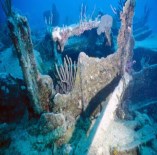
Naufragio del Lugano en el Parque Nacional Biscayne. Foto del NPS.
Biscayne National Park, Florida
One often thinks of archeologists doing fieldwork on land with sifters and trowels. However, in the past couple decades, archeologists have conducted underwater fieldwork. The need for underwater archeology started when divers or looters discovered shipwrecks. A couple of hundred years ago, ships coming from Europe to North America did not have the technology we do today and therefore sank more frequently. In the waters off the coast of south Florida, a ship called the Lugano was traveling from Liverpool to Havana. It carried fine silks, wine, and food as well as 116 passengers, all but 2 of whom were Spanish immigrants on their way to call Cuba home. The passengers survived but the ship did not. Today, you can visit Biscayne National Park and explore the the Lugano and other sunken vessels on the Maritime Heritage Trail.
A menudo se piensa en arqueólogos que realizan trabajo de campo en tierra con tamices y paletas. Sin embargo, en las últimas dos décadas los arqueólogos han realizado trabajos de campo bajo el agua. La necesidad de arqueología subacuática comenzó cuando los buzos o saqueadores descubrieron naufragios. Hace un par de cientos de años, los barcos que venían de Europa a América del Norte no tenían la tecnología que tenemos hoy y, por lo tanto, se hundían con más frecuencia. En las aguas frente a la costa del sur de Florida se encuentra un barco llamado Lugano que viajaba desde Liverpool a La Habana. Llevaba sedas finas, vino y comida, así como 116 pasajeros, de ellos dos eran inmigrantes españoles que esperaban hacer de Cuba su nueva casa. Los pasajeros sobrevivieron, pero el barco no. Hoy, puedes visitar el Parque Nacional Biscayne y explorar el Lugano y otras embarcaciones hundidas en el Maritime Heritage Trail (Sendero del Patrimonio Marítimo).
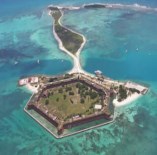
NPS photo
Dry Tortugas National Park, Florida
Off the coast of Key West are small coral reef islands where Ponce De Leon onced settled. Because of the large population of sea turtles (tortugas) and the lack of fresh drinking water, De Leon named these islands “Dry Tortugas”. The islands became important for trade among Spain and the Gulf Coast, but were considered a graveyard for ships. A 600-ton vessel en route from Cuba to Spain, Nuestra Señora de Rosario, sunk after encountering extreme weather. Today, you can visit Dry Tortugas and explore the Maritime Heritage Trail which includes Nuestra Señora de Rosario and many other sunken vessels.
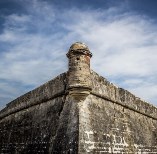
NPS photo
Castillo de San Marcos National Monument, Florida
Castillo de San Marcos is located in the first Spanish settlement in the New World and stands as the oldest masonry fortress in the United States. Throughout the years, its purpose has changed from a fort, to a prison, to a refuge. It is a reflection of how colonial life with a mixture of African and Indigenous customs created its own culture and heritage. You can visit Castillo de San Marcos and enter the fort while seeing many archeological items on display that tell the story of the first Spanish settlement.
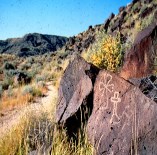
NPS photo
Petroglyph National Monument, New Mexico
Archeologists all over the world study rock art. Petroglyphs – rock surfaces chiseled away to form an image – can be used to survey a site and give us a deeper understanding of how humans used their landscape. At Petroglyph National Monument, there are over 24,000 carvings along a 17-mile rock basalt escarpment that date all the way back to 2,000 BCE. The most recent petroglyphs were made by Spanish settlers during the Spanish colonial era of modern day New Mexico. When visiting the park, you can see the petroglyphs made the Spanish, including a religious cross, and signage about Spanish life.
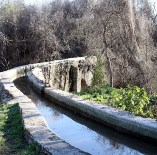
NPS photo
San Antonio Missions National Historical Park, Texas
Along the San Antonio River lies one of the most important Spanish missions. The San Antonio Missions focused on much more than just religion conversion. The missions held military personnel, had consistent cultural activity, and practiced integrated agriculture. From archeological investigations, we know corn, squash, and beans (Native American crops) grew at the site along with wheat and barley (European crops). To grow these crops, the Spanish built acequias (aqueducts) to channel the water from the San Antonio River to the plowed fields. The ruins of the oldest aqueduct is located at San Antonio Missions as well as other ruins of churches such as San Jose mission and San Juan mission. The park is a good example of how historic preservation and archeology join together to tell the broader story of daily life at the park.
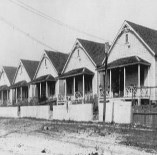
NPS photo
Ybor City National Historic District, Florida
Most people think of archeology as old things in distant places, but the reality is that it is everywhere and can be recent. Take, for example, Ybor City in Tampa, where Cuban immigrants have lived since the late 1800s. It was considered the cigar factory of the world. Ybor City was a refuge for Cuban immigrants escaping political turmoil. Jose Marti, a famous poet, philosopher, and community activist gave speeches right in front of the social clubs standing today about Cuba’s liberation from Spain. The historic district contains 950 historic buildings with strong political and cultural history. Families in Ybor City lived in casitas built by factory owners. Archeologists excavating at the casitas and the historic district found artifacts such as pencils and medicine bottles, similar to those we use today. Exhibits at the Ybor City Museum display items people left behind during this period. You can also visit the casitas and see exactly how people lived. History and archeology are closer than you think!
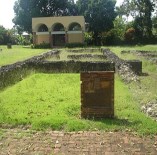
NPS photo
Caparra Archeological Site National Historic Landmark, Puerto Rico
San Juan is the current capital of Puerto Rico, but archeologists in the 1930’s discovered stone foundations and artifacts that told the story of its first capital. Ponce de Leon established La Ciudad de Puerto Rico in 1508. Casa de Tapias, its first building, was built with horizontal bands like the Spanish in Spain do today. A chapel was also built for the 200 residents of the city. Resistance by the indigenous Taino people forced Spanish settlers to move the capital to San Juan. Abandoned in 1521, Caparra stayed basically untouched until archeological excavation. Today, visit the exposed rock features of the oldest buildings, including Ponce De Leon’s house at Caparra, and see artifacts at The Museum of Conquest and Colonization of Puerto Rico.
